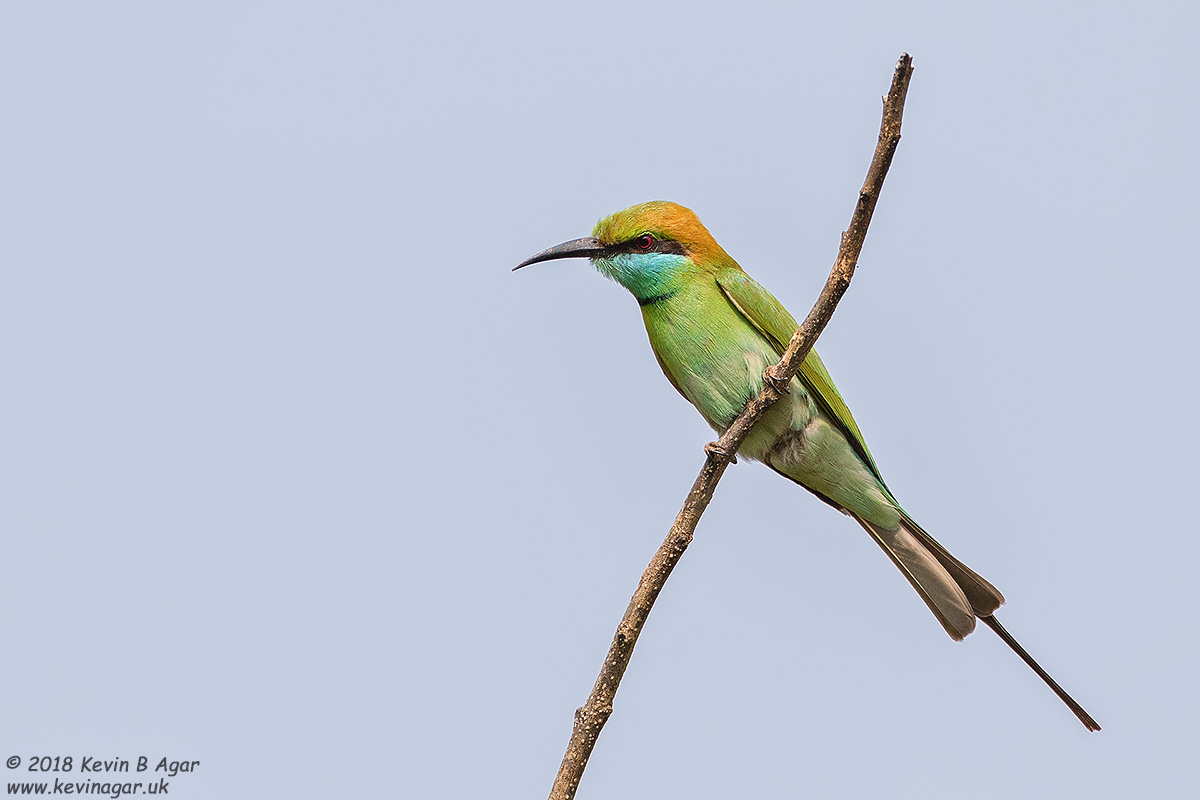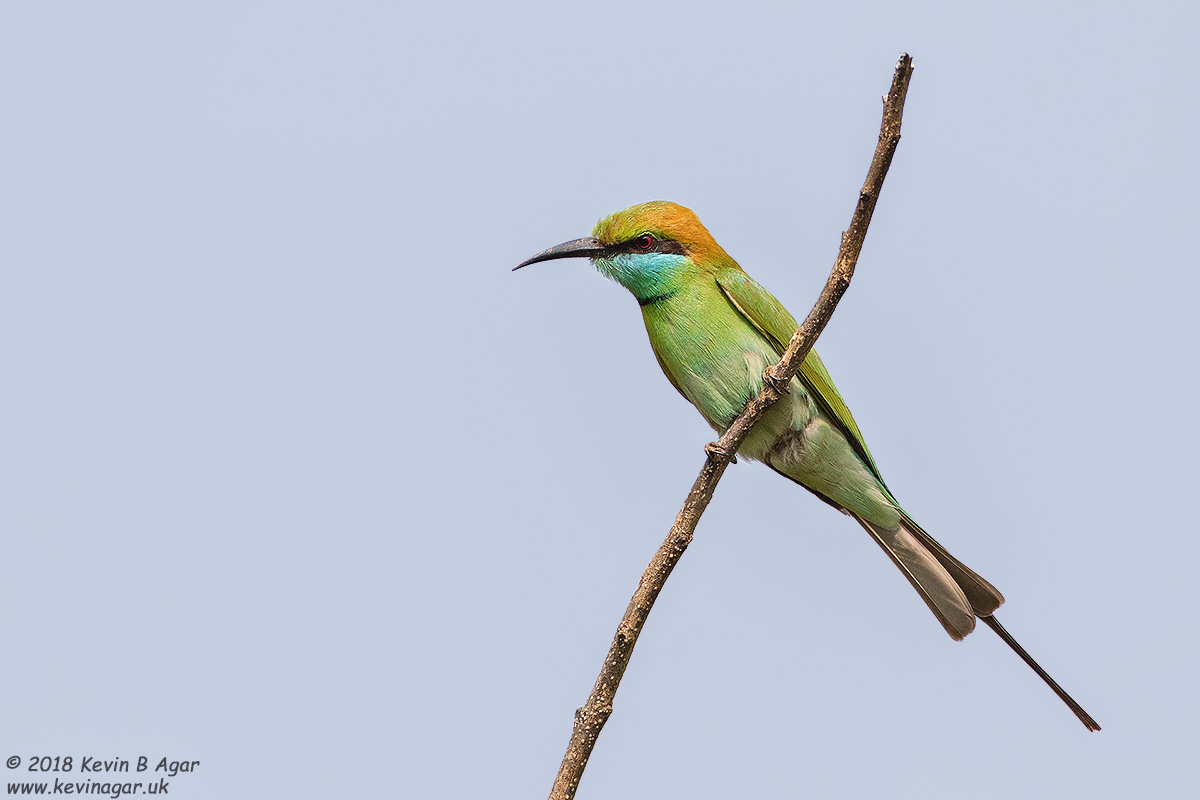Last Updated on August 1, 2019 by Kevin B Agar
Whenever we sharpen images we run the risk of introducing halos, especially when there is a big transition from light to dark. This can be seen clearly in the following image

Little Green Bee-eater, Merops orientalis
There is a white halo that is particularly noticeable on the dark tail and the bill.
This can easily be removed in Photoshop by Cloning and will greatly improve the look of the image. If you use the Clone tool in Normal Mode on this image you have to be very accurate in your cloning to avoid replacing parts of the bird with sky. The solution is to change the Mode to Darken as shown below

1. Select the Clone tool
2. Go to the Mode dropdown
3. Select Darken
Now select the sky near to the bill by holding the Alt key and left mouse click, you can then start cloning along the white line with just a left mouse click to replace the lighter pixels without affecting the darker pixels. This means that if you accidentally drift onto the bill it will not have any effect on the bill as it’s darker. You will get a result like below

This isn’t perfect as you can see the dark halo that wasn’t visible because the white halo overpowered it. This dark halo isn’t always there or is very faint and can be ignored but on this particular image it needs to be removed.
To remove the dark halo select the Clone tool and change the Mode back to normal as below

4. Select the Clone tool
5. Go to the Mode dropdown
6. Select Normal
You can now repeat the cloning as above but as the dark line is away from the subject it’s easier to remove without drifting into the bird.
A couple of quick hints
- If you have a straight line to remove then click at the start of the line to clone and then go to the end of the line and hold down the shift key and then click again and it will clone all between the start and finish point.
- On a PC if you hold the Alt key and use the right mouse key you can change the brush Diameter and the brush Hardness by moving the mouse up/down and left/right.
After doing this you should end up with an image like below

Little Green Bee-eater, Merops orientalis
I hope this makes sense and if you can think of anything to make it clearer then please say and I’ll change it.